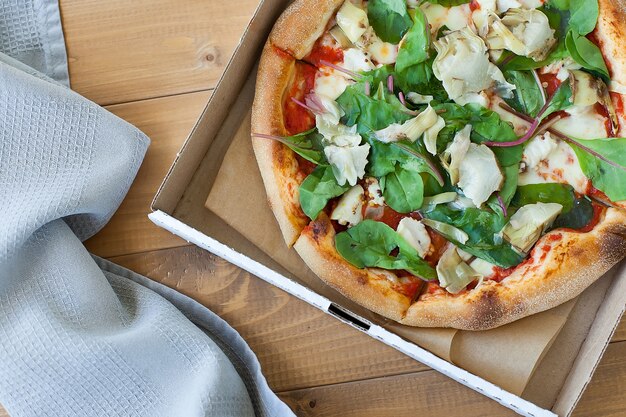Can Diabetics Enjoy Pizza Without Worrying?
Pizza is a universally loved dish, with melting cheese, tangy tomato sauce, and a variety of toppings that make it irresistible. But for those managing diabetes, the question arises: Can you still indulge in pizza without compromising your health? The short answer is, yes, a person with diabetes can eat pizza, but moderation and careful choice are key to preventing blood sugar spikes.
Understanding Pizza’s Impact on Blood Sugar
Pizza is typically high in carbohydrates, which can cause blood sugar levels to rise. The dough, cheese, and toppings often contain sugars and saturated fats, emphasizing the need for mindful eating. However, the impact on your blood sugar can be managed by making wiser choices:
- Choose thin crust: Opt for a thin crust instead of a thick, doughy one. This reduces the carbohydrate count significantly.
- Go for whole grain: If available, whole-grain crusts are a better option because their complex carbohydrates are digested more slowly, maintaining more stable glucose levels.
- Watch the toppings: Choose vegetable toppings over fatty meats. Vegetables add nutrients and fiber without excess calories or fats.
- Skip extra cheese: Limiting the amount of cheese or choosing lower-fat cheese options can help control calorie and fat intake.
Strategies for Eating Pizza with Diabetes
By applying a few strategic meal-planning techniques, individuals with diabetes can enjoy pizza in a way that is both satisfying and health-conscious:
- Limit portion sizes: One or two small slices in combination with a salad or a vegetable dish can help balance your meal.
- Check the nutritional information: Many pizza restaurants or frozen pizza brands provide nutritional info, allowing you to make informed choices.
- Keep track of your carb intake: Knowing how many carbs are in your meal helps you adjust the rest of your day's intake.
Financial and Educational Resources for Managing Diabetes
Managing diabetes goes beyond making dietary choices. It involves access to education, medication, and sometimes financial support. Here are some resources to consider:
- Government health programs: Many countries offer diabetes management programs through their national health services, providing both education and financial aid for medication.
- Non-profit organizations: Groups like the American Diabetes Association offer free resources including educational materials and sometimes financial support for treatments.
- Educational grants: Scholarships and grants are available for those seeking diabetes education or related healthcare career paths.
Taking advantage of these resources can help you more effectively manage diabetes, ensuring you can make the lifestyle changes necessary for better health outcomes.
Helpful Financial Assistance Resources for Diabetes Management
Here’s a quick guide to resources that could ease the financial burden of managing diabetes:
- 💊 Medicare and Medicaid: Federal health insurance programs that cover diabetes supplies, training, and testing for eligible individuals.
- 📚 Scholarships for Diabetes Education: Financial aid for healthcare courses aimed at diabetes research and management.
- 🏥 Patient Assistance Programs: Many pharmaceutical companies offer programs to offset the cost of diabetes medications.
- 💼 Employment Assistance Programs: Services that help individuals with diabetes find flexible work arrangements to balance job responsibilities and health needs.
- 🤝 Non-Profit Support Networks: Organizations providing advocacy, community support, and sometimes funding for those in need.
Taking charge of your health with the right dietary choices and financial resources ensures that enjoying pizza is not just a guilty pleasure, but a balanced part of your diet.
